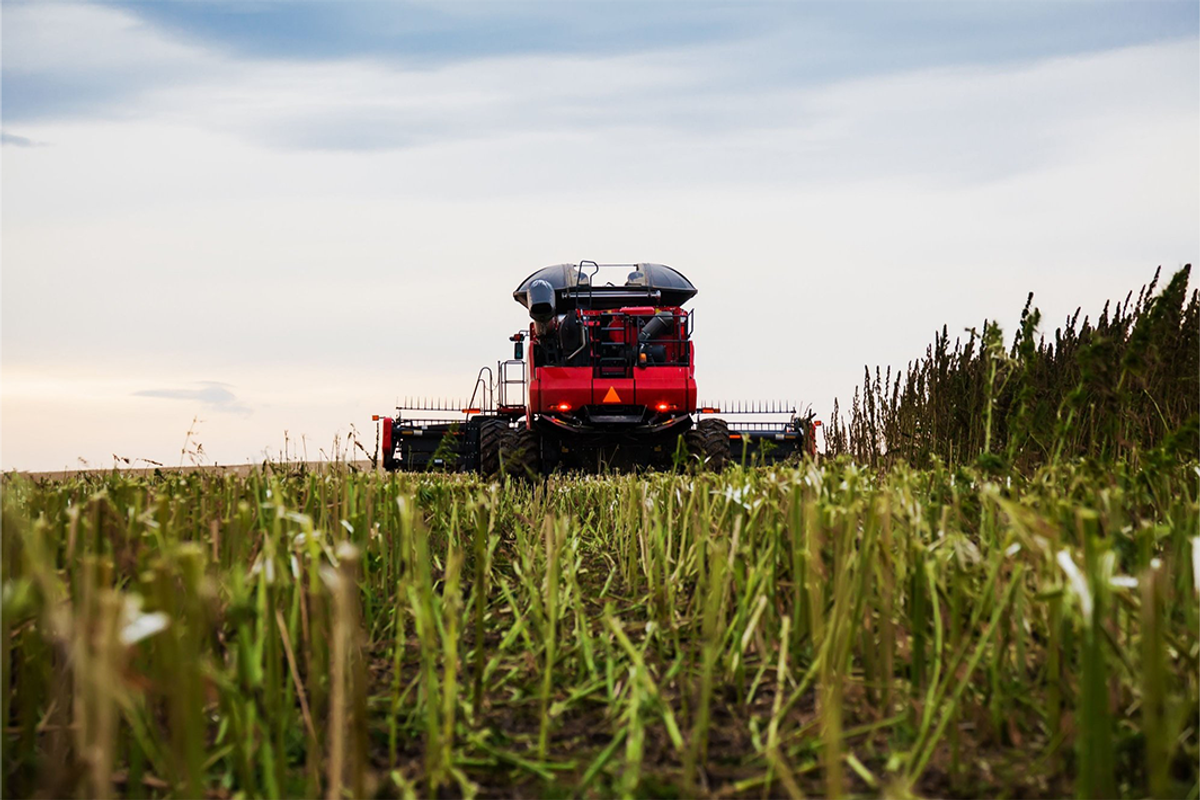
Industrial hemp presents an incredible opportunity for companies, farmers and investors to participate in the fast-growing carbon market.
Industrial hemp is largely known for its versatility, with applications ranging from food products to animal bedding and building materials. But one little known fact about the plant is its immense capacity to absorb carbon dioxide.
Combined with the plant's rapid growth cycle, this characteristic provides businesses and investors with a huge opportunity to stake its place in the emerging global carbon market.
This market is in its very early stages with major companies just now beginning to engage. In May 2024, Google, Meta, Microsoft and Salesforce announced they had committed to contracting up to 20 million tons of high-quality, nature-based carbon removal credits by 2030 as part of the Symbiosis Coalition, which aims to scale next-generation nature restoration projects focused on climate impact certainty.
To understand industrial hemp's investment and carbon capture potential, investors would benefit from a deeper appreciation of the plant itself.
Hemp applications
Hemp has been part of human civilization almost since the beginning. First cultivated over 12,000 years ago in East Asia, hemp has been used, among other things, for paper, cordage, food, textiles and medicine. Even prior to cultivation, anthropological evidence suggests gathered hemp fiber was used to produce cloth between nine and fifty thousand years ago.
Lightweight, hardy and versatile, modern-day hemp is used in a wide range of industries and applications, producing over 25,000 different products. Because hemp has a texture similar to that of linen, it's well suited for the production of consumer goods such as apparel, bedding and accessories like jewelry. Additionally, we still use hemp for cordage and animal bedding.
For the construction industry, hemp is an excellent insulator. Its flexibility and toughness make it far easier to implement than traditional materials. Because it's both naturally porous and resistant to mold, hemp insulation also supports better air circulation and even doubles as a sound barrier.
Hemp can also be used to produce insulating plaster, which is created by mixing hemp fibers with sand and calcium lime. Compared to standard plaster, this material is far more effective at regulating humidity. Hemp plaster is also far more durable and less prone to cracking or breaking apart than traditional plaster.
Hemp can even serve as a more sustainable alternative to wood and, in some cases, concrete. Compressed hemp fibers can be made of either recycled hemp paper or dried hemp fiber, conferring many of the same benefits as hemp insulation and plaster. Hempcrete — created by mixing hemp shives with lime and either sand or pozzolans — can be used to build self-insulating walls, roofs and screeds.
Hemp-based building materials have an incredibly low carbon footprint, with transportation being the largest source of emissions. What's more, structures built from hemp could potentially even be used as carbon sinks. Hempcrete, for instance, can store up to 100 kilograms of carbon per square meter.
Hemp is also used in the automotive sector, primarily in the production of composite panels. Manufacturers such as BMW are increasingly using the material to replace all plastics in their vehicles. Hemp-based bioplastic could also potentially replace PVC and other types of industrial plastics in construction and manufacturing. Lastly, hemp can clear impurities from soil and water and control weed growth, while filtered hemp oil can be used as biodiesel.
A sustainable future
Hemp plants not only have an incredibly rapid growth cycle but also require fewer pesticides and less water than other crops, most notably cotton. Hemp's high nutritional value also makes it a compelling and sustainable alternative to food crops such as soy. Growing hemp in rotation with other crops has also been shown to increase yields by up to 20 percent.
Hemp flowers are also invaluable during pollen shortages, providing sustenance for multiple different species of bees. Its natural disease, mold and rot resistance make hemp relatively easy to grow.
By far, hemp’s significant value proposition is its ability to capture big amounts of carbon during its growth — with evidence suggesting it may be up to twice as effective at carbon capture as trees.
A single hectare of hemp can absorb up to 22 tons of carbon, and with the plant's rapid growth cycle, it can achieve this absorption level twice a year, for a total of 44 tons. There's another characteristic of hemp that sets it apart: The carbon captured by hemp is permanently locked into the plant's fibers.
Comparatively, a single acre of woodland absorbs anywhere from 4.5 to 40.7 tons.
This means that, provided it can be farmed and cultivated sustainably at scale and without the use of harmful chemicals such as pesticides, industrial hemp could represent one of the best options for carbon reduction.
Capturing the carbon market
There are several business models that take advantage of hemp's sustainability and carbon capture potential. First and foremost is the production at scale of eco-friendly products. In addition to producing carbon-neutral and carbon-negative products, this approach allows for a highly diversified and holistic value chain — every part of the hemp plant, from stalk to stem, has at least one application.
This includes the materials market as well as consumer goods. Heartland Industries, for example, focuses primarily on the replacement of toxic additives and carbon-intensive materials from global supply chains. The company uses a proprietary regenerative agriculture technique, developed in house, that involves banking carbon.
Regenerative agriculture is another area where industrial hemp can deliver considerable value. Sustainably cultivating and rotating hemp crops not only allows farmers to establish a secondary revenue source but also helps improve biodiversity and restore soil health. As mentioned earlier, this can result in considerably higher crop yields.
Sustainable hemp processing and product development are core to HEMPALTA’s (TSXV:HEMP) business model. A Calgary-based AgTech company HEMPALTA works directly with farmers and agricultural organizations to process industrial hemp at scale through patented state-of-the-art technology. But the company’s unique value proposition goes beyond product development.
HEMPALTA’s acquisition in May 2024 of a controlling interest (50.1 percent) in UK-based Hemp Carbon Standard (HCS), is a game changer for the company, allowing it to participate in the fast-growing carbon market and opening up a lucrative new revenue stream. HCS’s cutting edge remote sensing technology is used to detect, track and measure carbon sequestration from industrial hemp farms. Taking advantage of hemp’s carbon capture capability and HCS’s technology, HEMPALTA partners with industrial hemp farmers to generate carbon credits that can then be sold on the voluntary carbon market, generating revenue for both HEMPALTA and the participating farmers.
Investor takeaway
Industrial hemp is one of the most versatile and sustainable crops in the world, with a wide range of applications and the potential to produce carbon-negative goods and materials. Companies such as HEMPALTA help to demonstrate the variety of different ways the crop can be monetized, from processing and product development to carbon credit generation. The most exciting thing about the current hemp landscape, however, is the fact that it is still a new and emerging sector – providing an excellent value proposition and considerable growth opportunity for first movers.
This INNSpired article is sponsored by Hempalta (TSXV:HEMP). This INNSpired article provides information which was sourced by the Investing News Network (INN) and approved by Hempalta in order to help investors learn more about the company. Hempalta is a client of INN. The company’s campaign fees pay for INN to create and update this INNSpired article.
This INNSpired article was written according to INN editorial standards to educate investors.
INN does not provide investment advice and the information on this profile should not be considered a recommendation to buy or sell any security. INN does not endorse or recommend the business, products, services or securities of any company profiled.
The information contained here is for information purposes only and is not to be construed as an offer or solicitation for the sale or purchase of securities. Readers should conduct their own research for all information publicly available concerning the company. Prior to making any investment decision, it is recommended that readers consult directly with Hempalta and seek advice from a qualified investment advisor.




